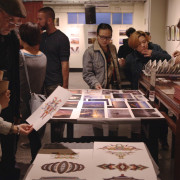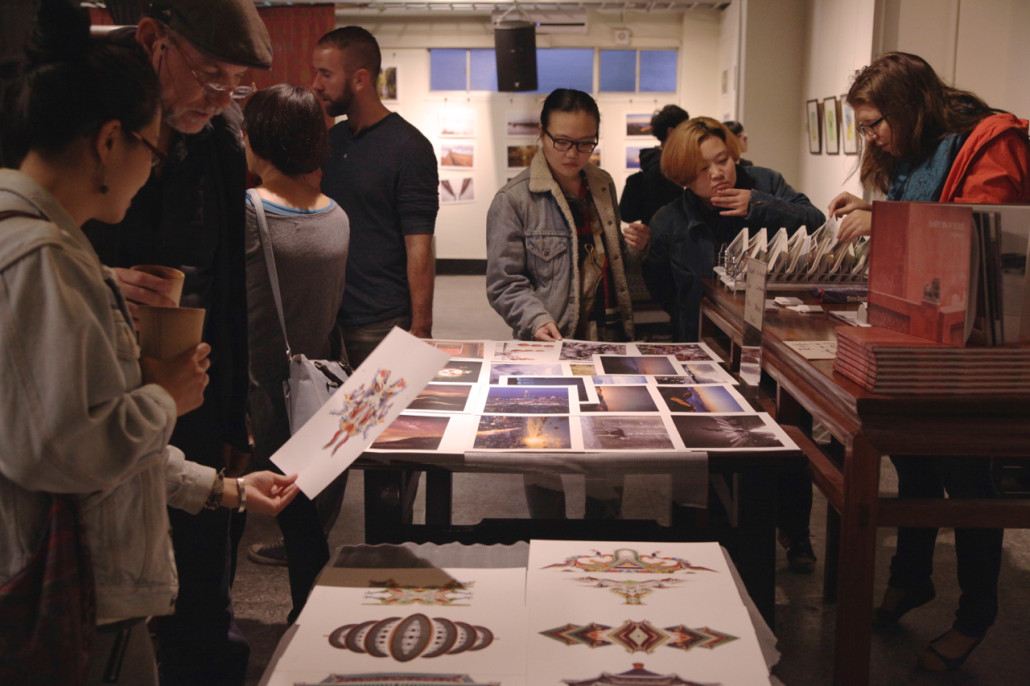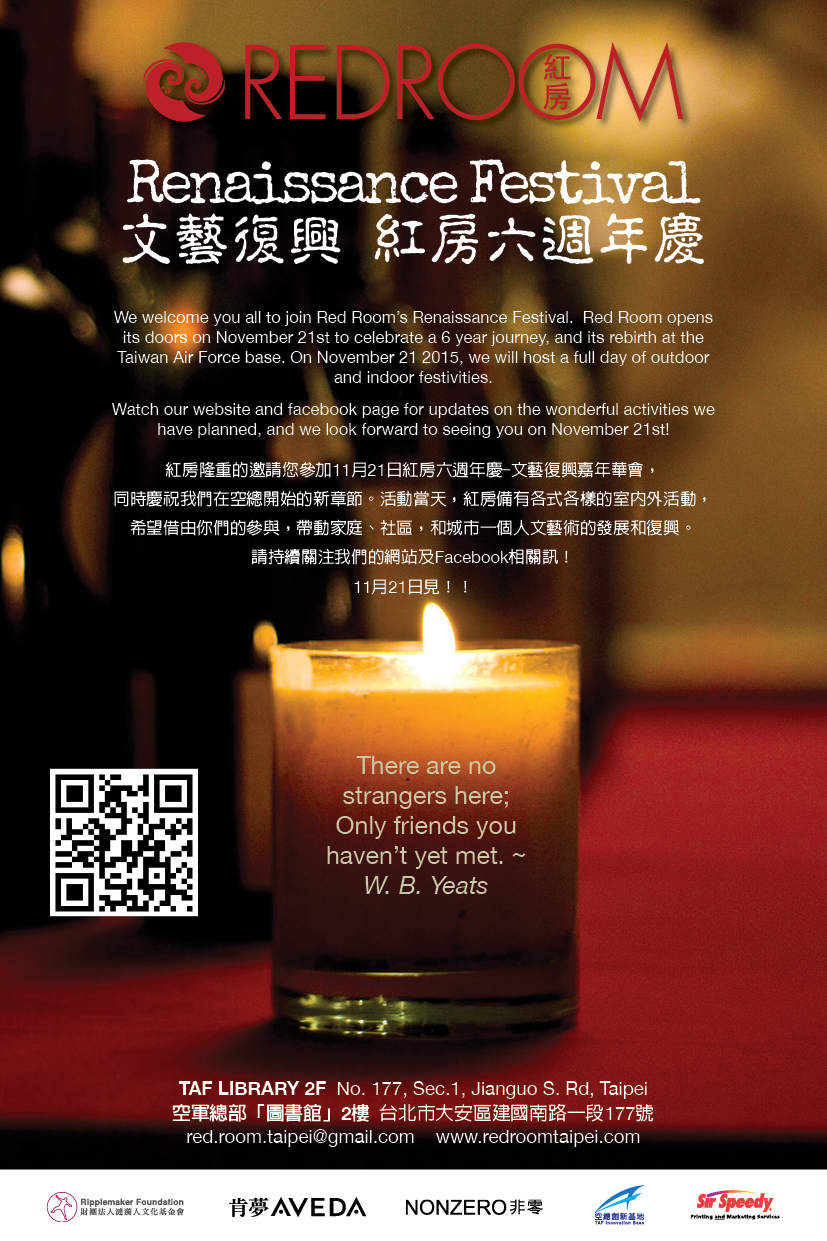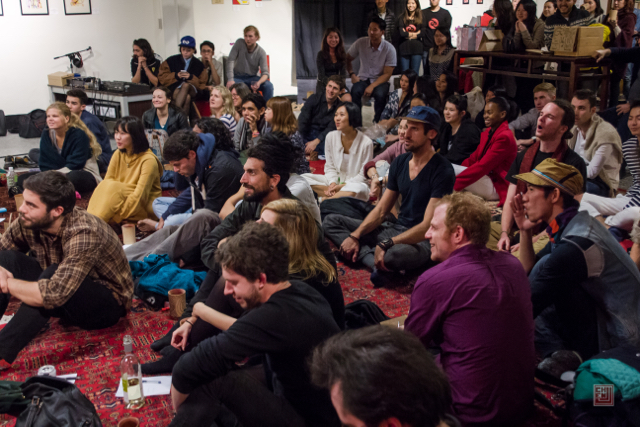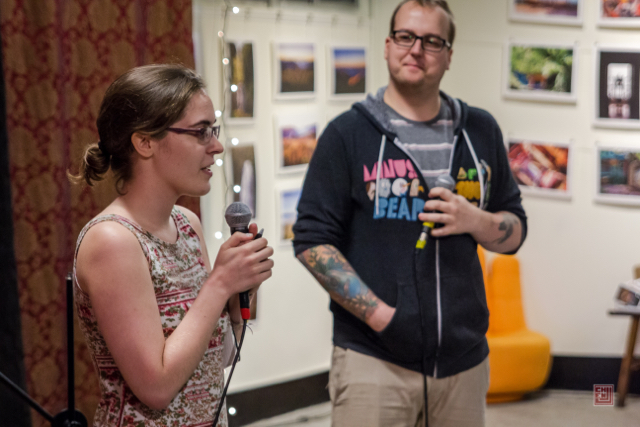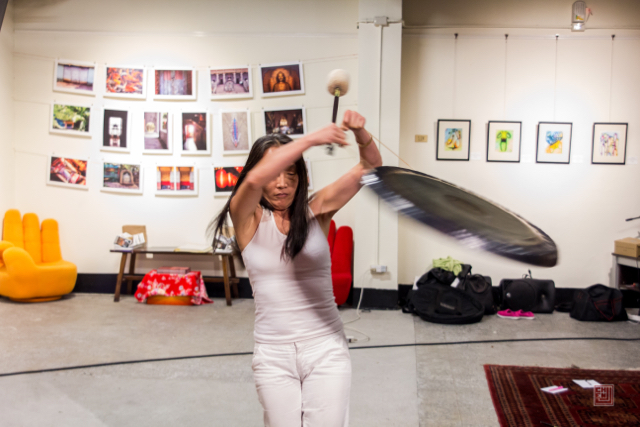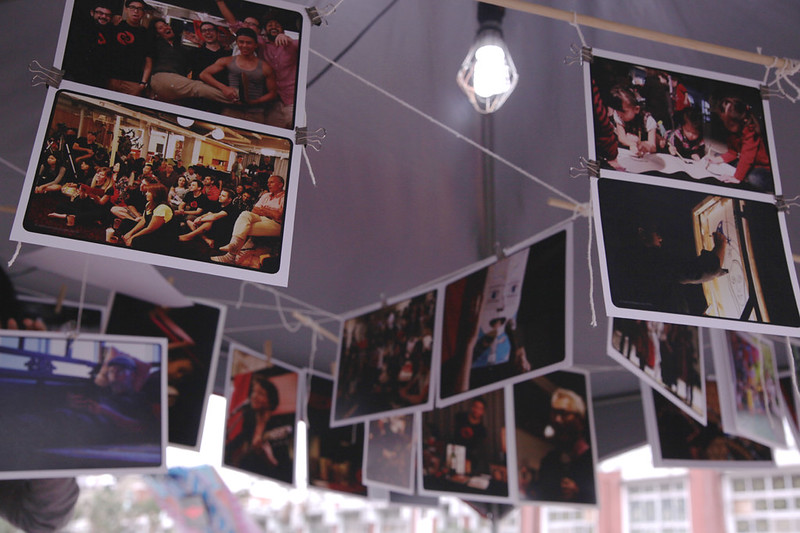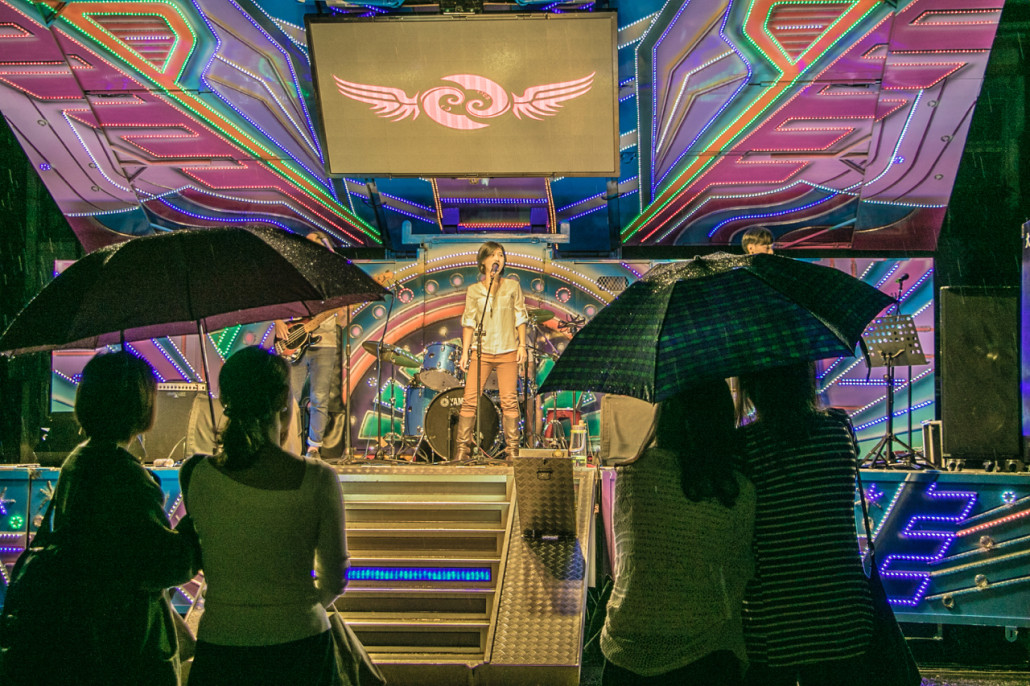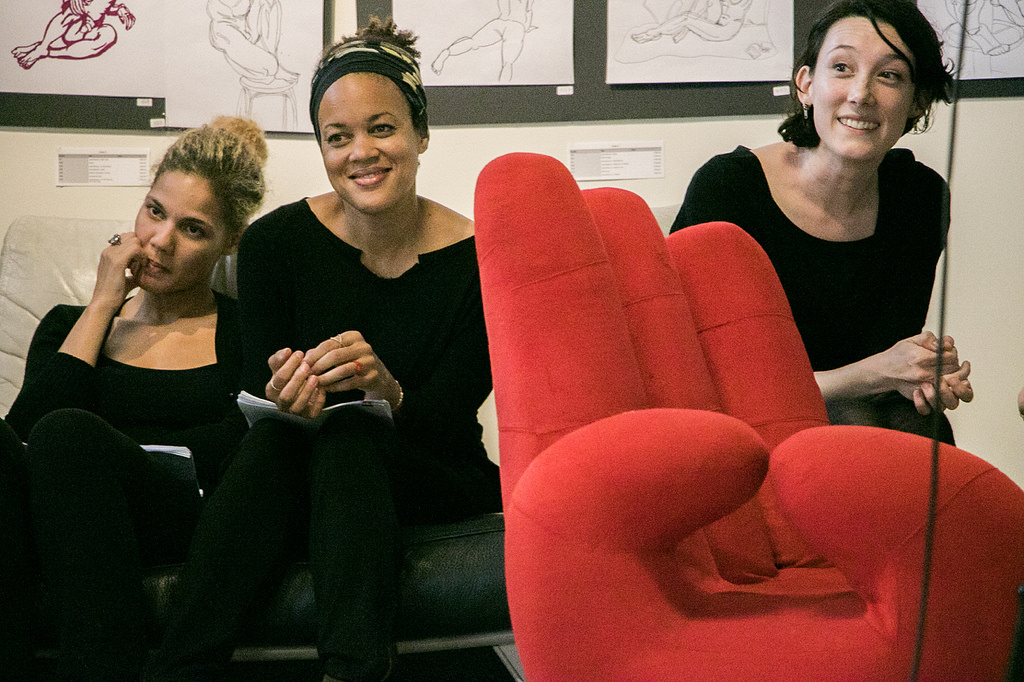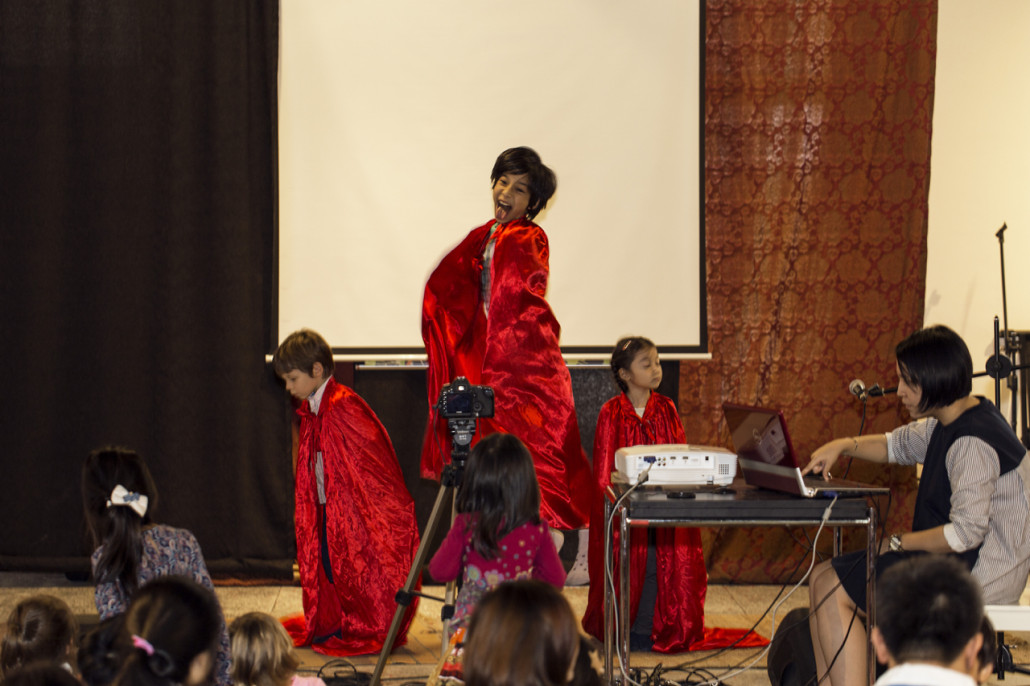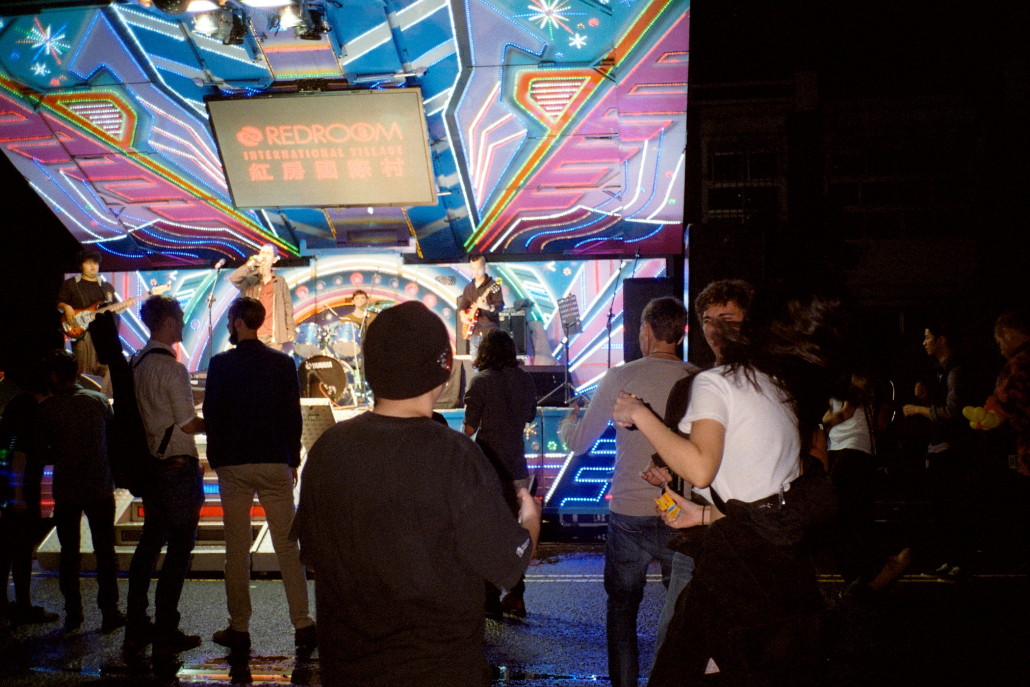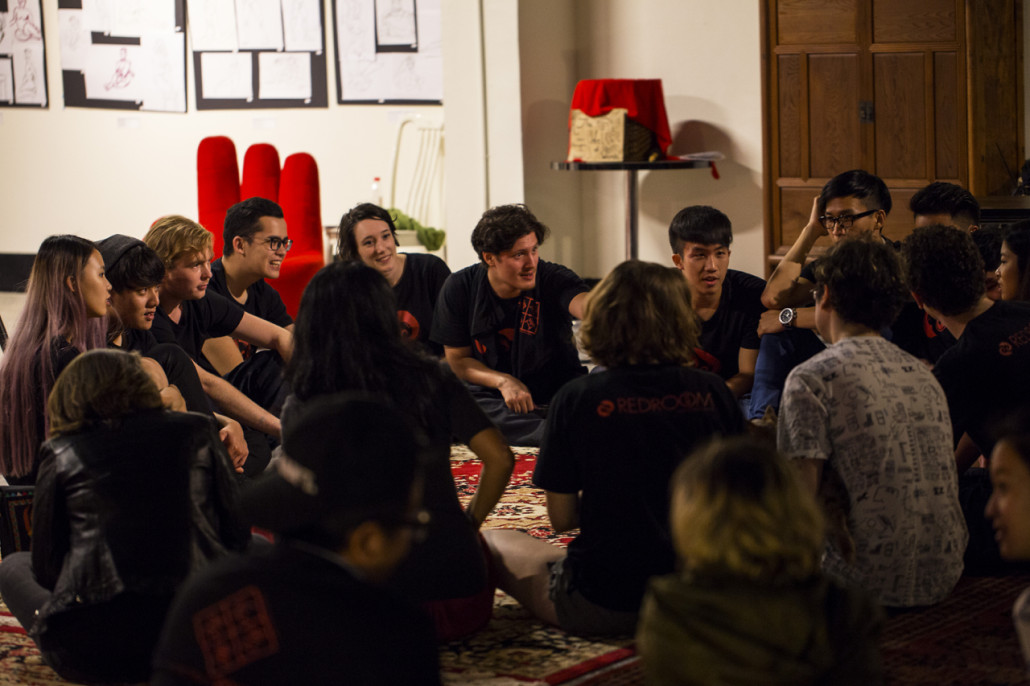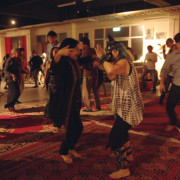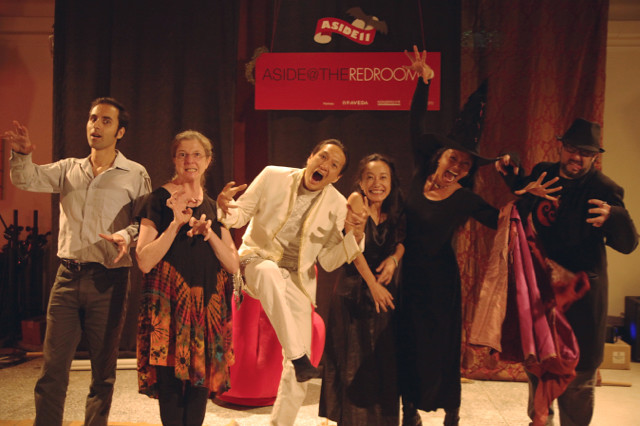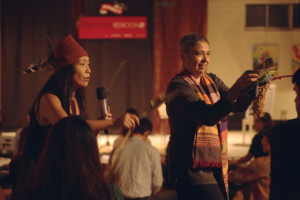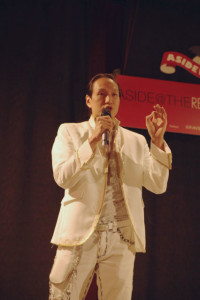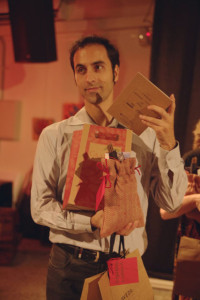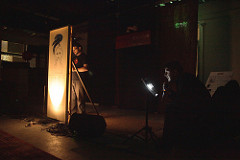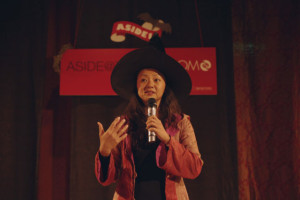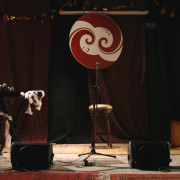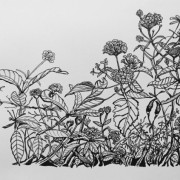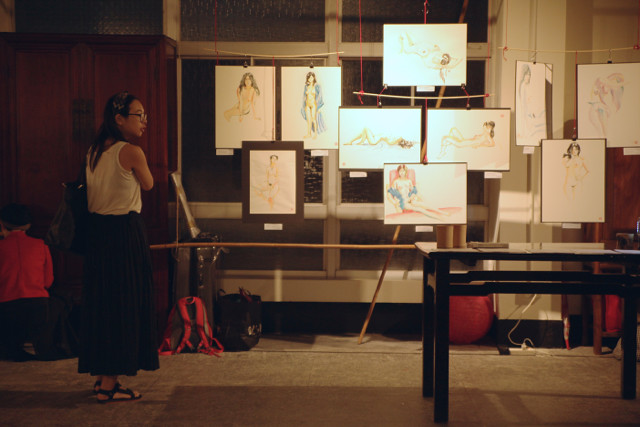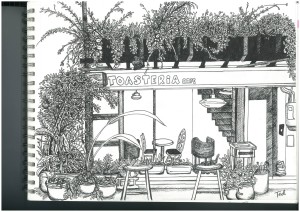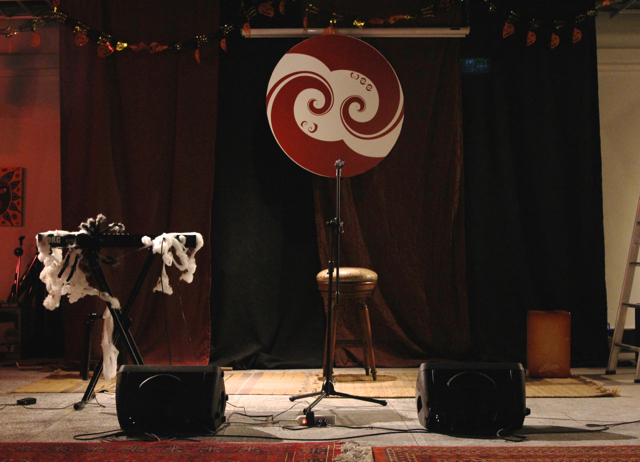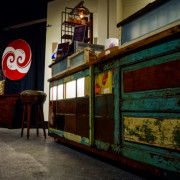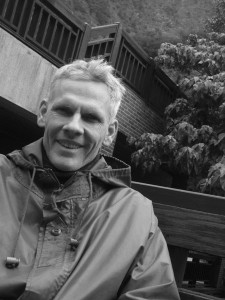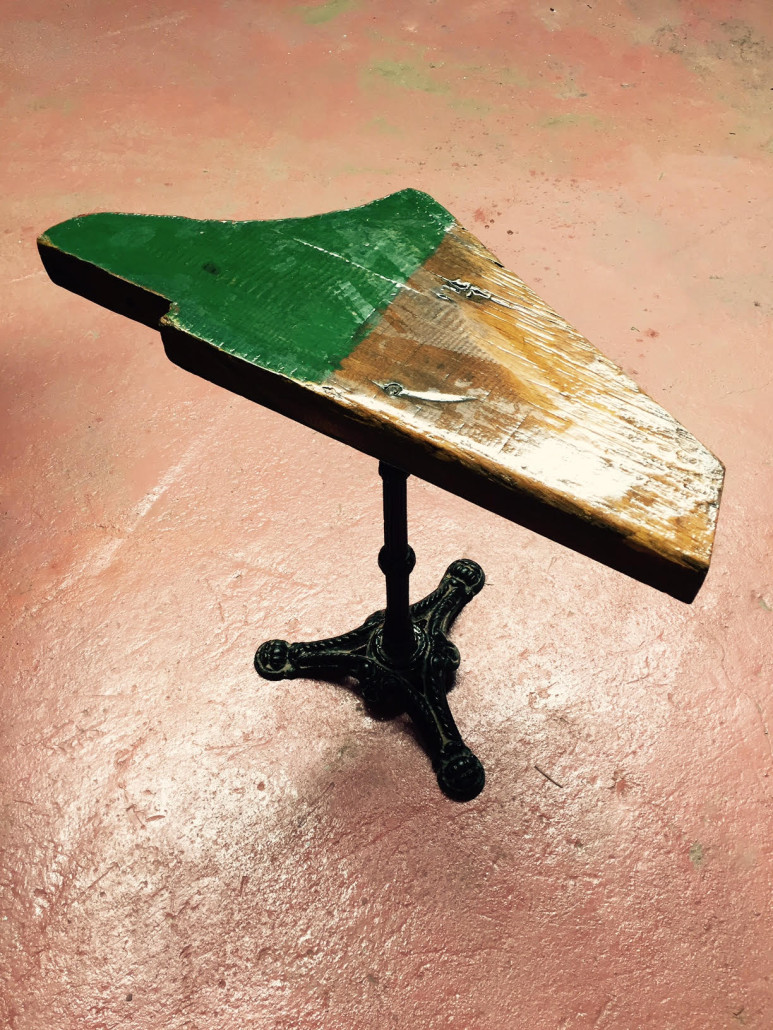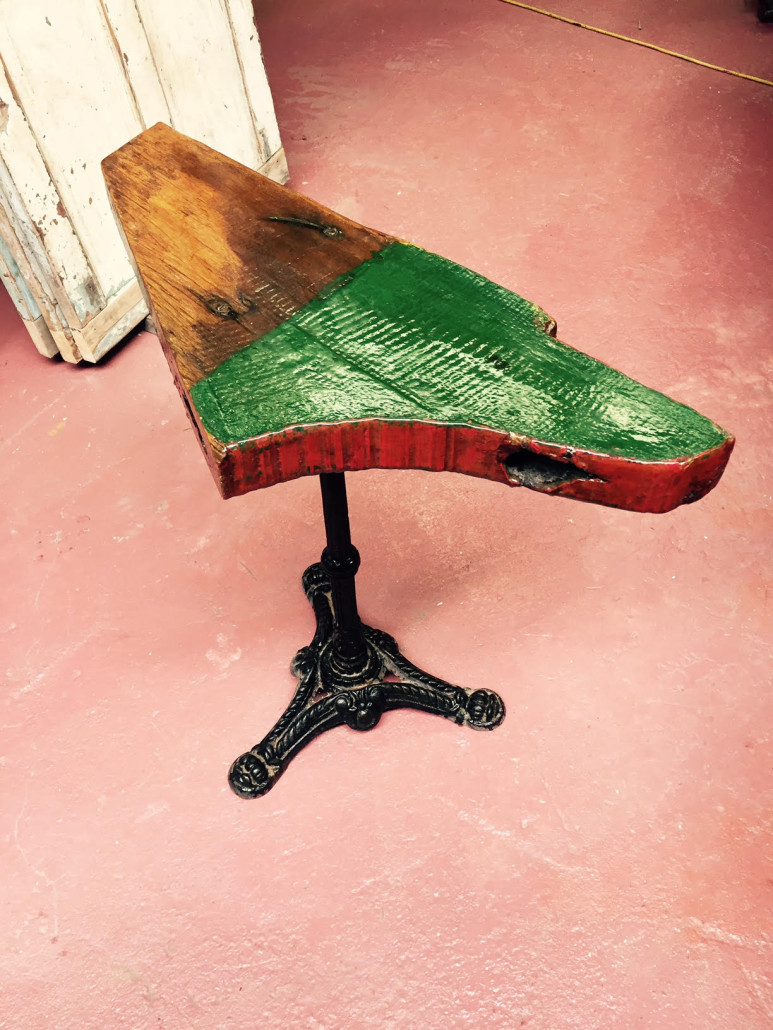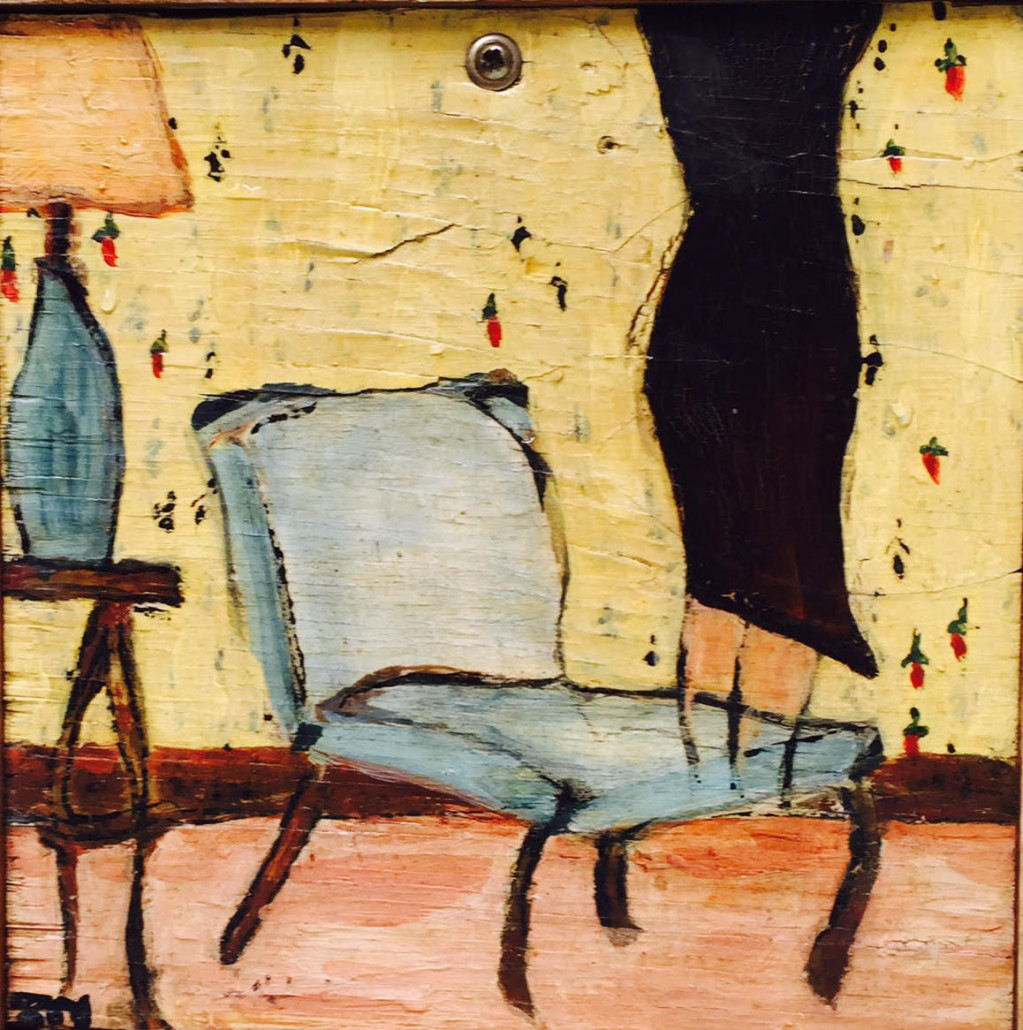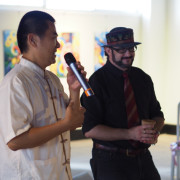We will be posting a series of conversations with some of the creatives from the Red Room and also the volunteers who make it possible to make our events happen.
Leah List in conversation with Charles Haines, Red Room volunteer and one of the two artists featured in Visual Dialogues 1, currently showing at the Red Room Gallery.
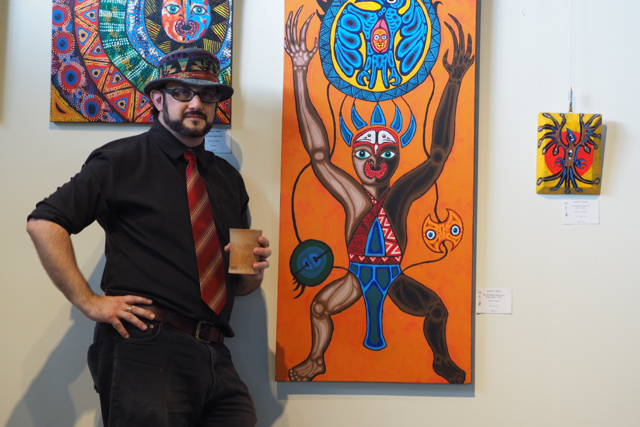
How would you describe your art? What inspires you?
Well, generally I don’t like talking about myself. Generally I’m a very self-effacing person, so when someone asks me a question [about my art] I try to answer the best that I can. One of my biggest inspirations is Norval Morrisseau. He’s an indigenous artist. He’s an Ojibway artist. I am inspired by indigenous art in general. Taiwan indigenous cultures are a big inspiration to my work. I would describe my work as full of the colors of my spirit.
What is it about these cultures that are so special beyond the ideas of spirit and change. What draws you to it?
I guess there are two reasons. The first one is that my [adopted] sister was more than half indigenous. I knew that from a very young age and that was something that affected me. Even if she, at that time, wasn’t interested in her roots, I was interested in her roots. Later she become interested and helped me to discover more. The other reason was the gallery in the community I grew up in called the McMichael gallery. They have a wonderful collection of Canadian art. In their collection they have indigenous works of art– some of which are considered artifacts, not necessarily fine art. They have some totem poles and masks by the Haida people and then they have paintings by Norval Morrisseau – as well as Canadian landscape paintings by the Group of Seven who painted in an impressionistic style.
The most vivid memories I have are these very striking, colorful indigenous works. Even the totems, [which were] not painted, were very distinctive. At a very early age, I was running around the gallery.
What parts of these cultures do you take and change? How do you mix these two things together to create something that is uniquely yours?
Actually, for the most part, I hope I’m taking something and making it my own. I’m not consciously copying anything, so it is my own and I always try to put myself into my work. I suppose one of the things that I’m most interested and that I try to put into my work is morphology: something changing into something else or some spirit inside another person or animal or, it could be a tree. I’m interested in the life of things.
I remember, in an earlier conversation, you mentioned crows being your inspiration. What is the importance of the ‘crow’ spirit to you? How do you separate the spirits and what is it about morphology and change that really captures the essence of life for you, do you think?
Well, for me, it’s that I was a crow in a former life and now I’m a person, so I changed, so I have a crow spirit. Also this idea of change is influenced by our modern culture. We’re endeavoring to improve on the human species and through that– some things are positive some things are negative– it’s like, every once in a while we do achieve something and change our DNA… I kind of maybe focus a little bit more on the darker aspects sometimes because that’s change, too. We all have this person on the inside that no one sees, our inner self that is something that interests me.
Many of them have flowing lines depicting one spirit changing to another. You also have a range of colors from vibrant to dark. I’m wondering since you’ve mentioned this positive-negative change, how to you capture those differences? You also mentioned focusing a little bit more on the “darker aspects sometimes”, is that something you consciously try to capture or is it more often affected by your mood?
The Changing spirits are showing what they are on the inside. I think it’s definitely affected by my mood, but also my earlier work is much darker. It has darkening tones with black and white and very little color. Though I suspect it has more to do with something else, I am a very happy person so I think my art work was an outlet for my darker side. I was releasing this dark energy in a constructive way. This was my young work. My later work has much more color and it’s much more vibrant.
So even your art has transformed? It’s another example of change.
Yes, absolutely, and I’m enjoying the color. At the time I started painting –I used to use color a lot, but I painted with oil. With oil you get a silky tone, a muted tone. You don’t get such vibrant colors– you get satiny colors most of the time. If you really want vibrant colors you can achieve that, but it’s satiny most of the time. Now I’m painting with an acrylic paint. Again, you can get a satiny color, but most of the time you get stark, vibrant colors.
When people look at your art, what is it you want them to feel? What is it you hope to achieve? Or do you just want to leave it to the viewer’s interpretation and connect with them in that way?
Maybe not. I hope I’m conveying some sense of myth or story or something, because I’m taking from these sources and interpreting them myself. I’ve done a lot of reading on mythology, so I hope some of that comes through, but I also hope that viewers can bring their own story to it too. That they will connect with the art. I really like it when a viewer says “Oh, I see this and this and this.” I love that.
It sort of brings the story to life and the spirit you created?
It does. It does. If somebody connects with it, when I first started, I thought to myself as a professional artist, my goal is not to, y’know, touch the people. It was to touch one person profoundly.
You talked about creating the story and allowing the viewer to connect to it in their own way. I’m wondering if you might elaborate on those stories. Perhaps, I’m sure you have your favorite, most artists do. Would you mind, maybe, telling us the story of some of your favorite paintings?
The story of the image is sort of a leaping off point, so it’s not necessary to try to convey a whole story in an image. It’s not an illustration. Some of my favorite ones include “The Siren”. The name was taken from a Greek myth. For me it’s also a lady that I know, who is– for me a kind of positive image– [because she has the body of a crow and] I consider myself a crow. At the time, when I put her head on a crow’s body, it was meant to be positive. Of course, a Siren could be read as a negative as well as Sirens lured men to their death, but also there’s the positive part of the siren which is their song which is very strong. They are very, very strong female characters and I sort of wanted to draw from that.
So, in a way, you’re playing with the positives and negatives we find in life through this painting? There’s definitely a bright, strong uplifting quality about the painting but, even the detail and the muted tones, also captured some of the darkness probably we all have?
Well, yes, it’s a picture of a person. So there is this positive energy and also this negative energy. It’s very wonderful and complex.
There’s one, it’s called “The Sun Spirit”. I’ve never, ever, ever been a sun worshipper. I don’t know where it came from. I’m more of a moon person, but since the sun and moon in my mind are quite close. They’re opposites, but they-
They complement each other?
Yes. Absolutely.
Spiritually they’re often dependent on one another and perhaps both are necessary for Earth, the way it is, to survive.
Yes, absolutely. Absolutely I think both are necessary for Earth. Actually, now that I think about it, this could be read as a very bright moon painting. I called it a sun painting, but it could be read a different way. That painting “The crow in the Sun” is inspired by a story about a crow that is in a sun. It flies to the top of a tree and that’s sort of the basic description. That tree is where it sits, at the tress apex. I thought that’s cool, that’s really interesting and it’s a Chinese story so it’s really interesting that they have a crow in a sun since crows are not looked upon too favorably here.
Another legend I read is about an archer who shoots down nine suns. There are ten suns in the sky and he shoots down nine suns. Actually there’s an aboriginal story with the same kind of idea, but in the Chinese story, each time he shoots down a sun, a crow spirit falls dead from the sky.
“Pangu makes order out of Chaos” which is another Chinese legend. [Pangu] separates the Earth and the Sky. Actually, the name came later. The painting I was thinking of was more of a raven spirit, but it has so many celestial things going on that the title fits it– even though it’s not a Chinese painting, it’s very aboriginal looking character.
Why the Red Room? Why did you choose the Red Room to exhibit your art?
Well, I’ve been with Red Room for six years and, being the master of cups, for that time, so I’ve been around. I have a very, very close connection with Roma, Manav and the other members of the Red Room community. They asked me if I wanted to show my art.
You mentioned you were involved in the community a lot, would you mind expanding a little on that. What is it about the Red Room that you feel is special or you feel nurtures your art? Six years is a long time to be with any community. What is it about the Red Room that made you want to stick around? Do you feel it has influenced your art?
Well, it started with Stage Time & Wine, that platform, and, for me, I just thought it was an amazing idea and I enjoyed being a part of that creative energy during Stage Time & Wine. I stuck around with Red Room because I believe in it. I think Red Room is one of the places, I’ve seen it, for artists who may not have their footing. They can come and share and gain their momentum and grow in confidence. For me, the influence comes from growing because I felt comfortable here. It’s a comfortable place. Red Room is also an outlet. At the Red Room I could come and visit my friends, and sort of hang out.
You said earlier Red Room was an outlet for you and a supportive community. Do you think that helped your confidence in your own art and, maybe, in that way influenced what you were creating?
That certainly could be. I certainly feel more confident with myself and it largely has to do with the community. Yes. Of course. I have a great example. A couple years ago I went back to Canada and while I was home I rediscovered Norval Morrisseau’s paintings and they inspired me. They brought out something in me. I returned to Taiwan and was scared to let this inspiration have full rein over me. I was scared to appropriate anything. I spoke with Roma about it and she could see how excited I was by what I had discovered, what was being brought out in me. Her advice was to let him be my guru, my teacher. She told me that if I embraced the spirit in all things that things that I could let Norval Morrisseau teach me.
When you’re inspired by another culture there’s always that question about which lines you can cross and which you can’t, so you always have to approach it with a level of sensitivity. So, how did you cultivate that sensitivity and how do you continue educating yourself to ensure you are being considerate of that?
That’s a huge, huge question and it’s always in the back of my mind. How [do I] do my own work and express myself while letting these influences come into my work? At the moment, it’s something that’s always there, but I’m trying really not to think about it and just to let it happen. I don’t know what I would do if, at some point, it caused a controversy or how I would answer that because I’m very aware of appropriation. I don’t want to appropriate.
I know that some way some people try to avoid appropriation or maintain sensitivity is by interacting with the communities they’re inspired by, speaking with them and learning their history. Would you say that’s something you’ve done diligently?
Yes. I’m continuing to do that. I actually just spent the weekend doing a workshop in an indigenous community in Hualien and I continue to collect literature and study. I’m not an anthropologist so I’m just reading and trying to take in these stories.
I’m curious, could you tell me a bit more about this workshop in Hualien?
I was giving a workshop on paintings and art in an indigenous community. We first did some hand-tracing and patterns as a warm up then we interacted a bit more. This was in partnership with a friend Amy Liu. She invites foreigners to come and do workshops in their specialty with the Indigenous children.
My sister passed away not too long ago. I think that’s also a way my paintings are the way they are. I think it could be her spirit influencing me; she’s definitely looking down on me. For me, some things I do are to honor her memory. This past weekend’s workshop fell on her birthday weekend 10/10 and I couldn’t think of a better place to be than there to honor her memory, a better thing than to work with those kids.
What is it about this workshop that was so fitting, do you think, to honor her memory? How involved was she with your art?
She wasn’t very involved with my art but she was always very, very supportive. I think, later in life, she was exploring her roots and I think that she would have been very touched that I was doing that.
So in making connections and helping others explore their own roots, you were honoring her?
Yes. I think she would have been very touched.
Charles Haines’ paintings will be on exhibit at the Red Room until the 31st. You can come and see, or purchase many of them any time the Red Room is open and most of them are for sale. Proceeds should be given to the Red Room and go to the artist.
If any viewers would like to talk about the paintings, or even just to meet and have a coffee at the Red Room, they can send Charles an e-mail at: murder.of.crows.10.5@gmail.com
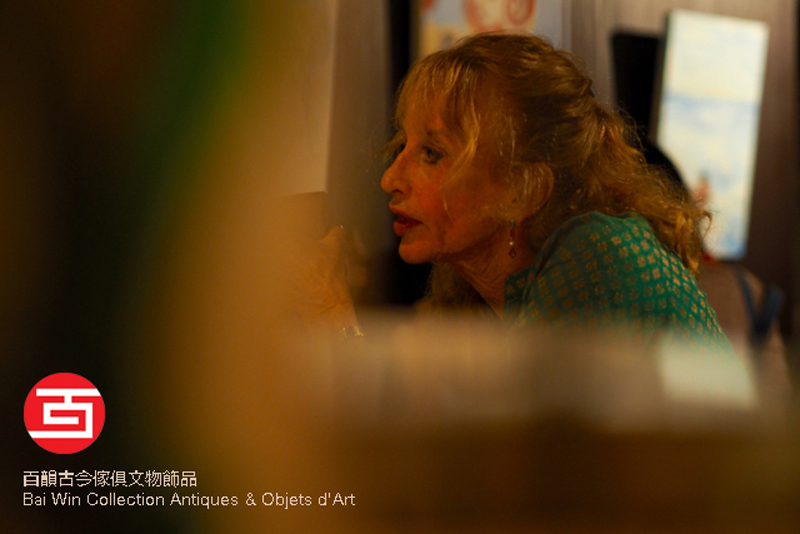 I am sitting at a small table in Bai Win Antiques situated next to a stately bed overflowing with wrapped Christmas wreaths. Faye Angevine, recovering from surgery, sits across from me in a wheelchair; throughout the interview she rolls back and forth ceaselessly, still not accustomed to holding still. At one point she pauses and looks back at a couple inspecting a recreation of a Taiwanese kitchen. “Do you need help?” She asks them. “I’m being interviewed believe it or not. It doesn’t look like it, I’m eating a sandwich, but I am.” She is a busy woman. In addition to running Bai Win Antiques, she dedicates a great deal of time to issues she cares about.
I am sitting at a small table in Bai Win Antiques situated next to a stately bed overflowing with wrapped Christmas wreaths. Faye Angevine, recovering from surgery, sits across from me in a wheelchair; throughout the interview she rolls back and forth ceaselessly, still not accustomed to holding still. At one point she pauses and looks back at a couple inspecting a recreation of a Taiwanese kitchen. “Do you need help?” She asks them. “I’m being interviewed believe it or not. It doesn’t look like it, I’m eating a sandwich, but I am.” She is a busy woman. In addition to running Bai Win Antiques, she dedicates a great deal of time to issues she cares about.

